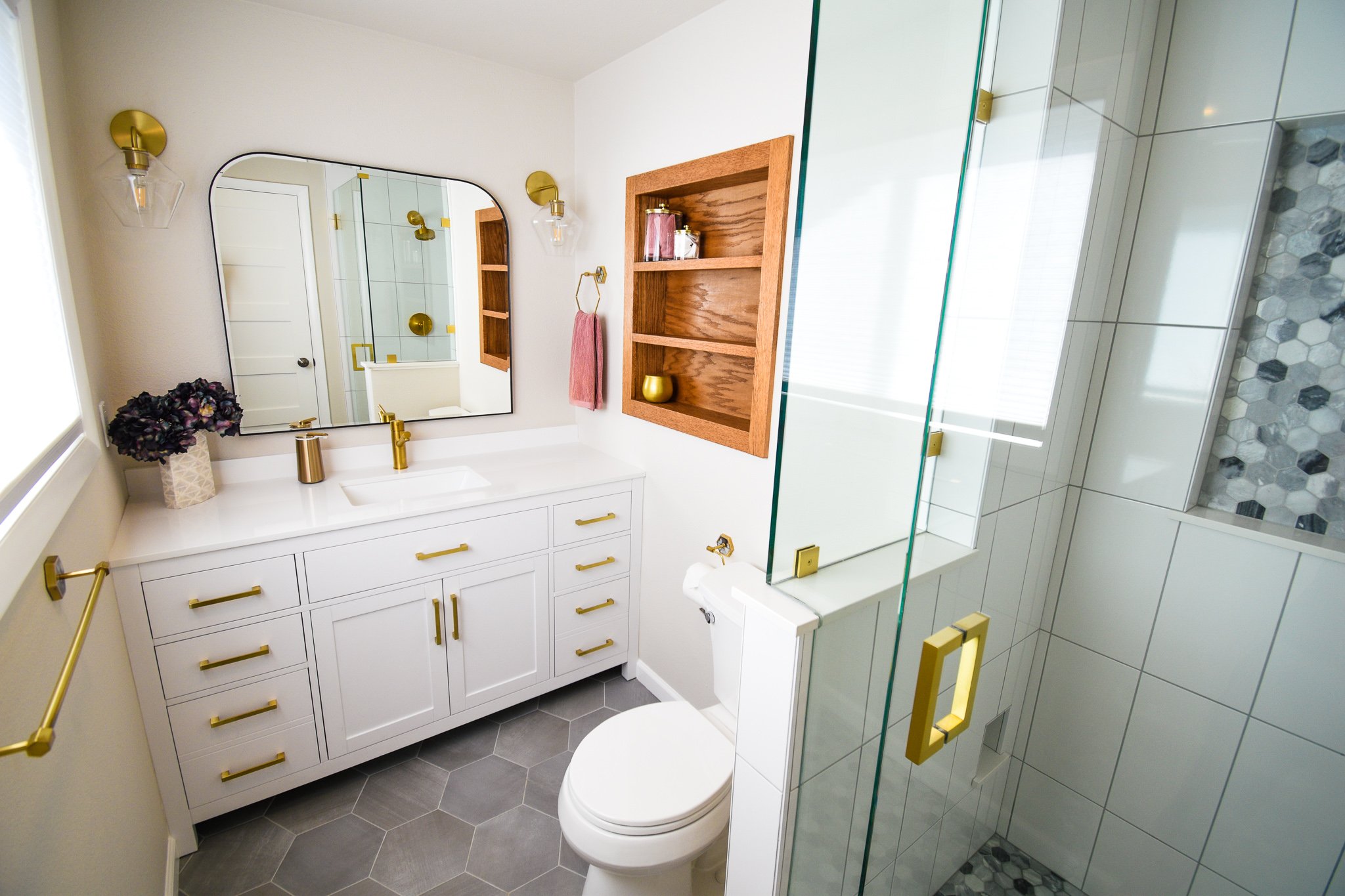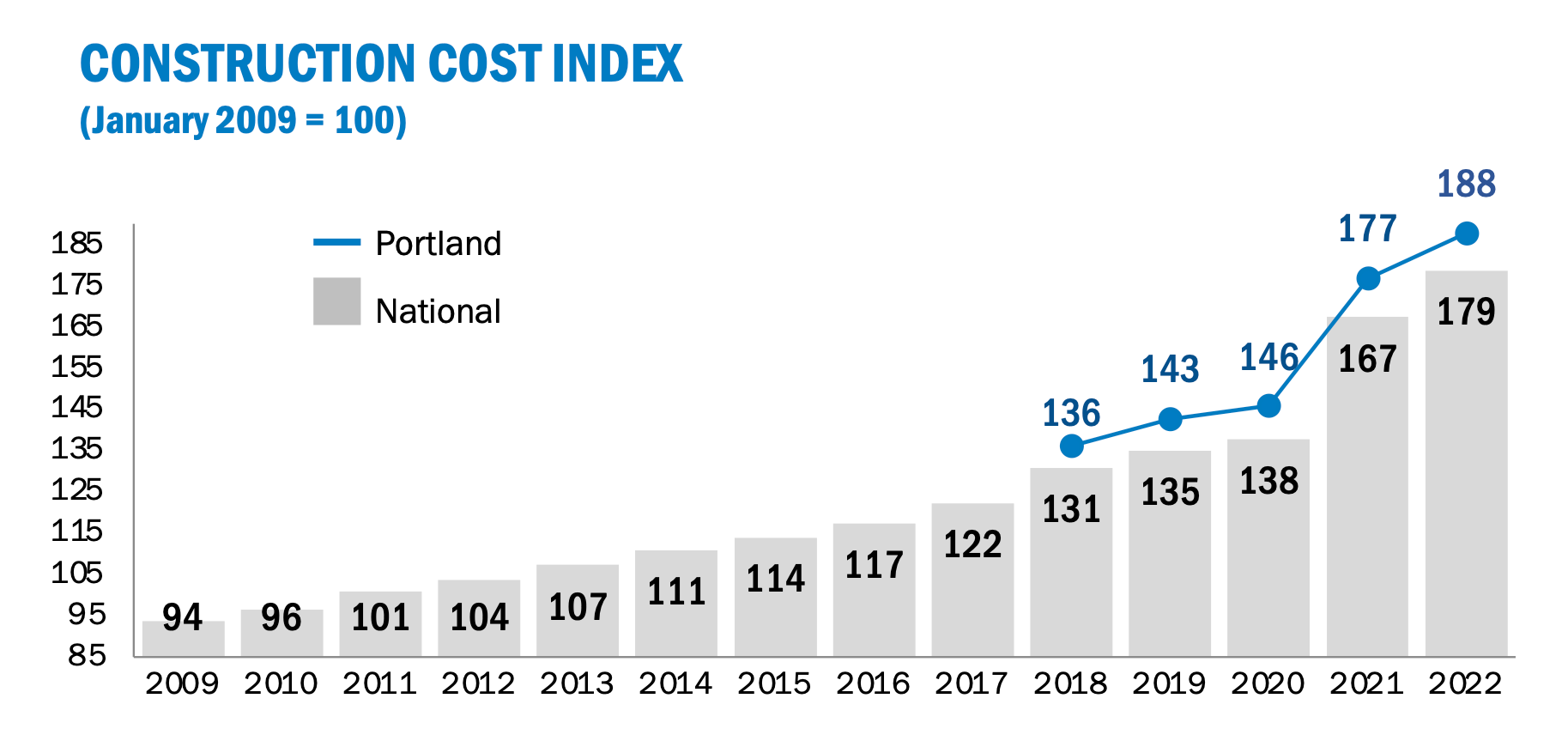
The True Cost of a Bathroom Remodel
Why does it cost so much?
One of the first questions we ask our clients is, ‘Do you have a budget in mind for your project?’
A hesitant answer is understandable. Most of us have experienced the sales tactic of divulging a budget only to receive a quote at the same cost…to the exact cent.
Our goal with the budget question is not to max out our client’s budget, but to create a realistic expectation at the start of the construction process. Bids take extensive time and involve collecting exact costs from the trades involved (e.g., plumbing, electrical, drywall, etc.). Some trades walk the site before offering their number; this takes time. We price out finishes by contacting our suppliers, then create an approximate schedule.
The clock is ticking for the client while we invest this time on the front end. The last thing we want to do is shock our clients with a project number that is two to three times what they were expecting! That’s when folks get frustrated (which we totally understand).
We hold HGTV (the WebMD of the remodeling world) partially responsible for showcasing an unrealistic expectation of remodeling costs and experiences.
4th Avenue Homes, like most construction companies, doesn’t operate with suppliers and trades donating time, tools, and materials so they can advertise on our non-existent show (although it would be awesome if we did have a show!). We build in the PNW which has a cost-of-living index that is 15 to 25% higher than cities like Atlanta or Phoenix.
Portland’s construction index, which is generally higher than the national average, has risen rapidly in the last two years. We ask clients about budget to produce a budget-friendly scope of work and finishes, or to let the client know that hiring us might not be in the cards right now.
If we can’t work with a client, we try to offer DIY options to update or refresh a space (our personal homes reflect this route!).
Ready to move on from the long budget intro? When it comes to construction, we can guess at the question burning in your mind: ‘How much does this stuff cost?’
Let’s break it down by category and impact before we provide a summary of total costs.
Labor: Why start with labor? Because on average, labor makes up 50% of the cost of a remodel or construction project. We want to ensure that we are compensating hardworking and skilled subcontractors (and ourselves) appropriately. In general, the employment cost index has gone up nationally by more than 30% over the last 10 years.
Skilled Trades: Most everyone is aware of labor shortages, especially for skilled trades that require specialized training and licenses (e.g., electricians and plumbers). It takes years for an electrician or plumber to receive their journeyman card and license, and years as a journeyman to become a supervisor who can start their own business.
Nobody wants electrical fires or flooded basements, so as the general contractor we build partnerships with subcontractors to ensure we have the best (fully licensed, bonded, and insured) available for each job.
General Contractor: We get it– hiring a GC is not for everyone, but here’s what you should know about the costs behind the gig. GCs manage schedules, suppliers and material delivery, inspections with the city/county, subcontractors (trades operate in a specific order and need full access to a space). GCs tow a full tool trailer because they regularly self-perform work (demo, framing, tile, insulation, cleaning, etc.).
Ultimately the GC is the stop gap on the job to complete the one-off tasks, which saves our clients time and money (who wants to navigate that dirty crawl space to fix the insulation in the floor?)
Geographic area: Fun Fact – on average, Oregon’s electricians are the 5th highest paid in the country; Washington has the 3rd highest paid.
Bottom line: If a bathroom remodel cost $15,000 ten years ago, we could assume that labor was around $7,500. Based on the data above, if a client wants to replicate the same project, the labor cost is now double ($15,000 in labor).
U. S. Bureau of Labor Statistics - Occupational Employment and Wages, May 2022
Construction: One thing we love about being a construction company is the variety – no project or house is the same. But there is a constant: every house has a surprise.
We’ve seen water damage in the subfloor, siding not properly attached to the framing, a bar sink draining into a pit under the house, cast iron mains, lead paint, asbestos, no studs in the wall (true story), and the list goes on.
Our expertise allows us to foresee a lot of these challenges during the discovery phase (which normally takes place during demo when we look behind walls and under floors). These variables contribute to the higher cost of remodeling compared to new builds.
Age of the home: An early 1900’s house can expect additional costs. Bringing plumbing and electrical up to code and abating hazards like asbestos can be costly. Additionally, fixing previous renovations can be more challenging than updating the original construction.
Materials: Nearly 40% of a project’s cost is material related. Stuff costs more now than it did 10 years ago. Increased labor costs means that cabinets cost more to assemble.
Products like paint and PVC, which utilize petroleum, continue to increase in cost. In the last two years the Production Price Index for Paint increased by 40% – reflected in the costs of projects that have paint.
Materials like wood are a little more volatile – if you built in 2021 and 2022, you likely paid triple the cost than the previous year.
Markets Insider - Lumber (5.15.23)
Bathroom Size: Size matters; more square footage = more work and more materials. 4th Avenue Homes does 99% of our work in two general footprints. For the sake of this article, we’ll call them mid-size and large.
Mid-size: 40 square foot bathroom (5 feet by 8 feet) – we perform 80% of our bathroom renovations in this footprint.
The mid-sized bathroom generally allows for a shower or tub shower (which is 5 feet long), a toilet with minimal clearance (15 inches either side or 30 inches total), an average-sized vanity (24 to 36 inches), and a small linen closet.
These bathrooms tend to be the most economic and budget friendly due to their predictable footprint, use of space and materials, and limited extras (e.g., oversized custom showers, multiple vanities, etc.)
As far as budget, the sky is always the limit with finishes, but the safeguard is this: a mid-size bathroom can only hold so much fancy.
Large: a bathroom between 60 and 100 square feet. We see these as the primary bath/ensuite, especially in homes built in the last 10 years.
Large bathrooms are spacious and known for custom sizes. These bathrooms are not only bigger (more work) but carry additional expenses: custom size/shape showers, freestanding tub, large/multiple vanities, and higher end finishes.
Pro Tip: Moving plumbing or electrical increases costs. Leaving an existing footprint during a remodel can save time and money.
Finishes: If you can dream it, you can spend money on it. At 4th Avenue Homes we warranty our work and want the best customer experience, so we generally don’t work with builder-grade materials.
We work with suppliers who provide a range of finishes from economic semi-custom products to fully custom special-order items. Vanities are often a center piece – a custom 60” vanity can run over $5,000 while a semi-custom off-the-shelf model with similar aesthetics might be closer to $1,500.
A shower presents finishing choices that impact cost: a tiled shower pan vs fiberglass shower pan, shower shape (shower pans come in standard shapes and sizes but a custom pan can be made to fit any space), frameless glass shower doors or prefab, tiled niches vs no niches, curbless vs curbed, linear drains vs standard center drain, fancy-pants shower system (technical jargon) or standard shower head, etc.…
Flooring and shower tile can vary from $3/sq ft to $25+/sq ft, with some accent tiles hovering above $50/sq ft.
Ultimately, customer preferences determine the level of finish and have a big impact on price.
Permits and Fees: We put this last because it is least exciting. Permits and inspections are required to help keep buildings safe.
4th Avenue Homes is onsite for inspections and values a good relationship with local inspectors. The cost associated with remodeling permits and testing (asbestos testing is required for finished drywall, vinyl flooring/adhesives, insulation, etc.) is generally not too imposing (less than 5% of the total project costs) but can be a lengthy process.
Structural permits trigger a full permit review and can take eight weeks for the local permitting office to process. Back and forth between the permitting office, builders, and engineers can increase the wait time to 12 or more weeks.
Abatement and Fees: Asbestos abatement is the loudest voice in the Portland, Oregon area. The average cost associated with abating asbestos (for vinyl flooring in a 5x8 bathroom) by a licensed company is between $2,500 and $3,500.
Summary: Now for the moment you’ve been waiting for!
What is the cost of remodeling a bathroom?
Costs are broken down into a couple categories below. To quickly recap the important points: if you did a bathroom remodel 10 years ago or saw it recently on HGTV, just double that price and you will probably land in the ballpark with realistic numbers.
The ranges below are based on our experience and industry knowledge – we hope to provide homeowners with a realistic budget framework so project plans and dreams can take flight.




